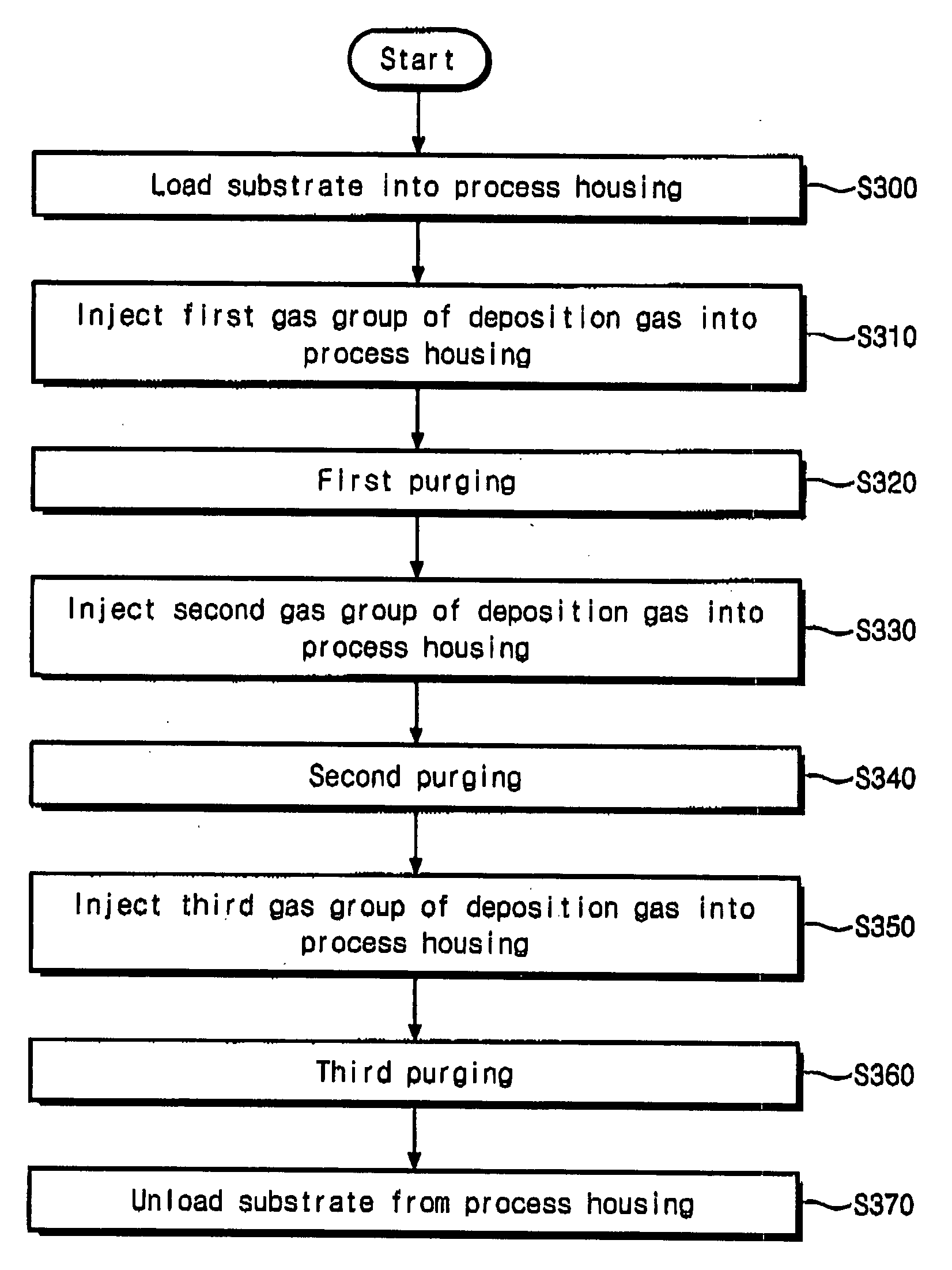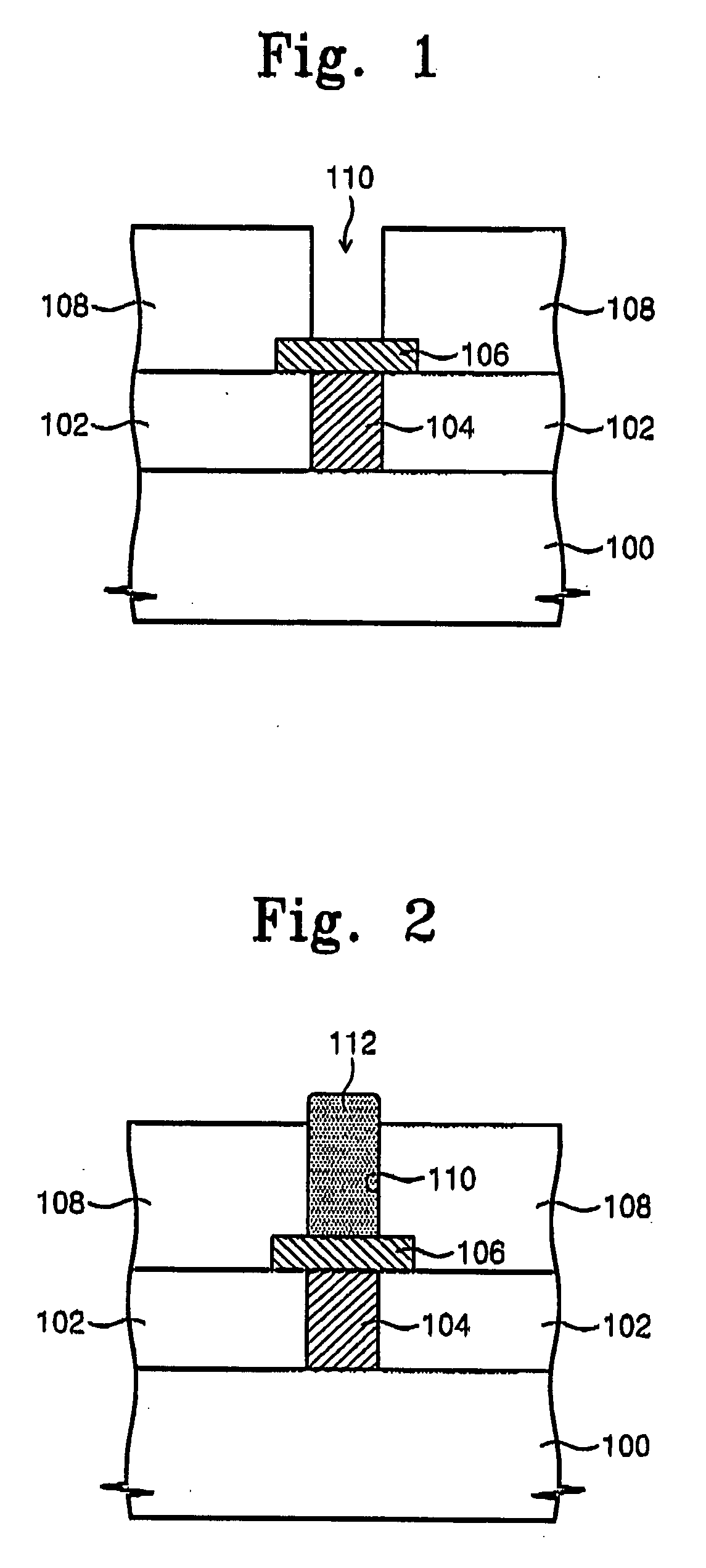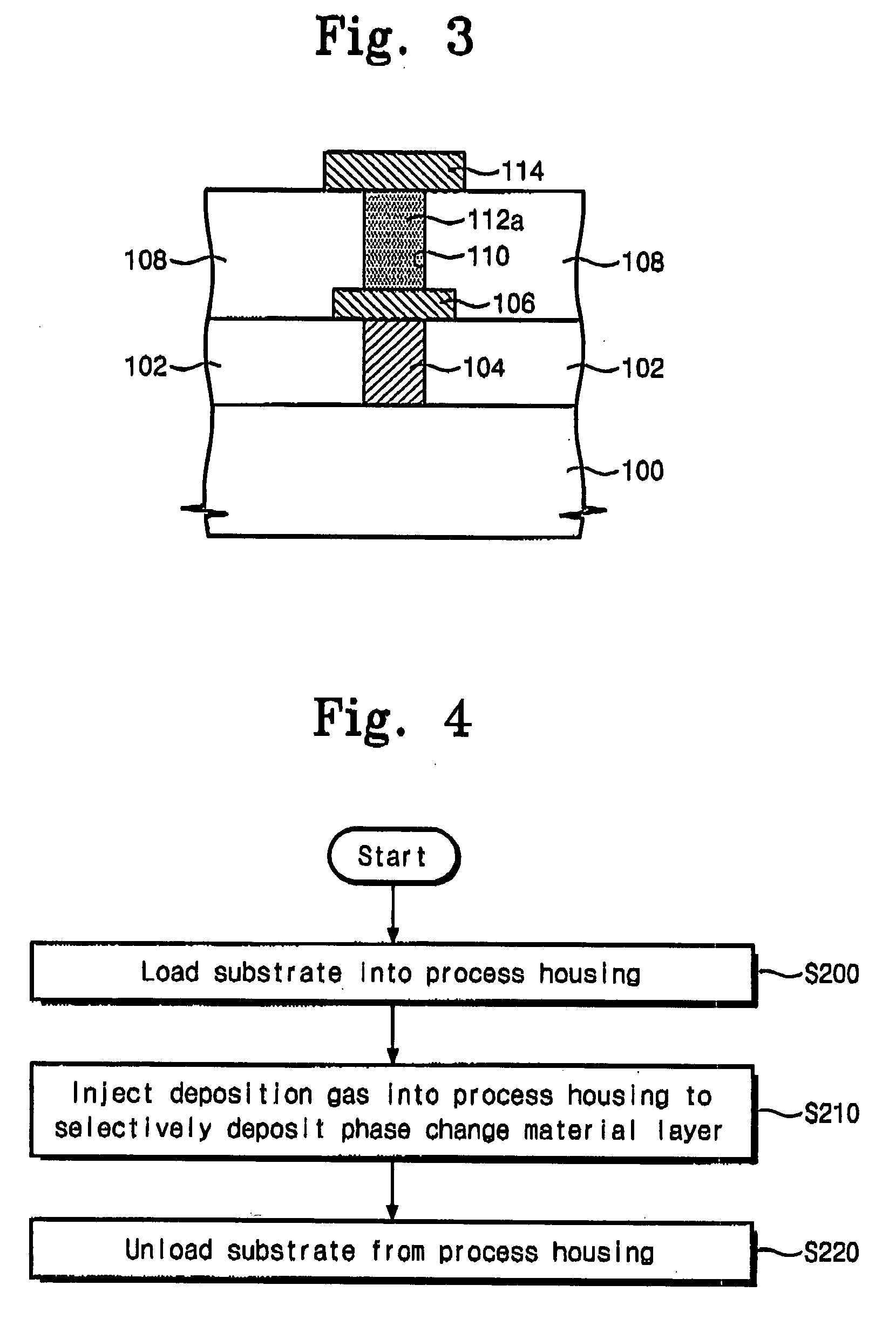Method of forming a phase change material layer, method of forming a phase change memory device using the same, and a phase change memory device so formed
a memory device and phase change technology, applied in the direction of solid-state devices, coatings, chemical vapor deposition coatings, etc., can solve the problems of difficult high-integration large power consumption of phase-change memory devices, and significant amount of current required to generate this much heat. high-integration and low power consumption
- Summary
- Abstract
- Description
- Claims
- Application Information
AI Technical Summary
Benefits of technology
Problems solved by technology
Method used
Image
Examples
first embodiment
[0037]FIGS. 1 through 3 illustrate cross-sectional views of stages in a method of forming a phase change memory device according to the present invention. Referring to FIG. 1, a lower insulating layer 102 may be formed on a substrate 100, which may be, e.g., a semiconductor substrate. The lower insulating layer 102 may be formed of, e.g., an oxide layer. A lower plug 104 may be formed through the lower insulating layer 102. The lower plug 104 may be in contact with the substrate 100. The lower plug 104 may be formed of, e.g., a conductive material such as doped polysilicon, a metal such as tungsten, a conductive metal nitride such as titanium nitride or tantalum nitride, a metal silicide such as tungsten silicide or titanium silicide, etc.
[0038]A switching device may be formed on the substrate 100 to be in contact with the lower plug 104. For example, one end of a PN diode may be formed on the substrate 100 to be in contact with the lower plug 104. In another implementation, source / ...
third embodiment
[0061]FIG. 5 illustrates a flowchart of a method of forming a phase change memory device according to the present invention. Referring to FIGS. 2, 5 and 6, the substrate 100 having the hole 110 exposing the lower electrode 106 may be loaded into the process housing 400 (S300). Herein, the substrate 100 may be loaded on the top surface of the chuck 405.
[0062]Referring to FIG. 5, the deposition gas may be supplied as a plurality of source gases that are grouped into a plurality of gas groups each having at least one source gas. In this embodiment, the deposition gas may contain a first, a second and a third group of gases. In other implementations, the deposition gas may include two gas groups, four gas groups, or more. Where the phase change material layer 112 is a GST, one of GeH(i-Bu)3, Sb(i—Pr)3, and Te(t-Bu)2 may be in the first gas group, another one of them may be in the second gas group, and the remaining one of them may be in the third gas group. A first gas group of the depo...
fourth embodiment
[0075]FIGS. 8 through 10 illustrate cross-sectional views of stages in a method of forming a lower electrode according to the present invention. Referring to FIG. 8, the lower insulating layer 102 may be formed on the substrate 100, and the lower plug 104 may be formed through the lower insulating layer 102. A buffer layer 105 may be formed on the lower insulating layer 102. The buffer layer 105 may be formed of a conductive material.
[0076]The interlayer insulating layer 108 may be formed on the surface of the substrate 100 and may be patterned so as to form the hole 110 exposing a region of the buffer layer 105. The buffer layer 105 may allow for increasing an alignment margin between the hole 110 and the lower plug 104. Accordingly, depending on the requirements of the particular device and fabrication process, the buffer layer 105 may be omitted, in which case the hole 110 may expose the lower plug 104.
[0077]As shown in FIG. 8, a preliminary lower electrode 107 in the shape of a ...
PUM
| Property | Measurement | Unit |
|---|---|---|
| temperature | aaaaa | aaaaa |
| temperature | aaaaa | aaaaa |
| aspect ratio | aaaaa | aaaaa |
Abstract
Description
Claims
Application Information
 Login to View More
Login to View More - R&D
- Intellectual Property
- Life Sciences
- Materials
- Tech Scout
- Unparalleled Data Quality
- Higher Quality Content
- 60% Fewer Hallucinations
Browse by: Latest US Patents, China's latest patents, Technical Efficacy Thesaurus, Application Domain, Technology Topic, Popular Technical Reports.
© 2025 PatSnap. All rights reserved.Legal|Privacy policy|Modern Slavery Act Transparency Statement|Sitemap|About US| Contact US: help@patsnap.com



